Compared: 2022 Subaru Forester vs. 2022 Subaru Crosstrek
Size is the biggest differentiator between the two all-wheel-drive SUV models.
 Subaru
Subaru
Article QuickTakes:
Subaru's Crosstrek and Forester each fill a different niche, but there's plenty of crossover that may lead some shoppers to compare the two. The Forester is a bit larger than the Crosstrek, with a more powerful standard engine, while the Crosstrek is a bit more affordable and offers a hybrid option and superior fuel economy.
Let's dive in and discover which SUV is right for you.
 Subaru | Forester
Subaru | Forester
Forester Commands Slightly Higher Price
The 2022 Crosstrek starts at about $24,000 and rises to around $37,000 for a plug-in hybrid that can travel an estimated 17 miles on electricity alone. Most of the trim levels — Base, Premium, Sport, Limited, and Hybrid — offer only one or two option packages, such as the mid-tier Sport, which has a $1,645 package that adds a power moonroof, premium audio system, and a larger touchscreen with navigation.
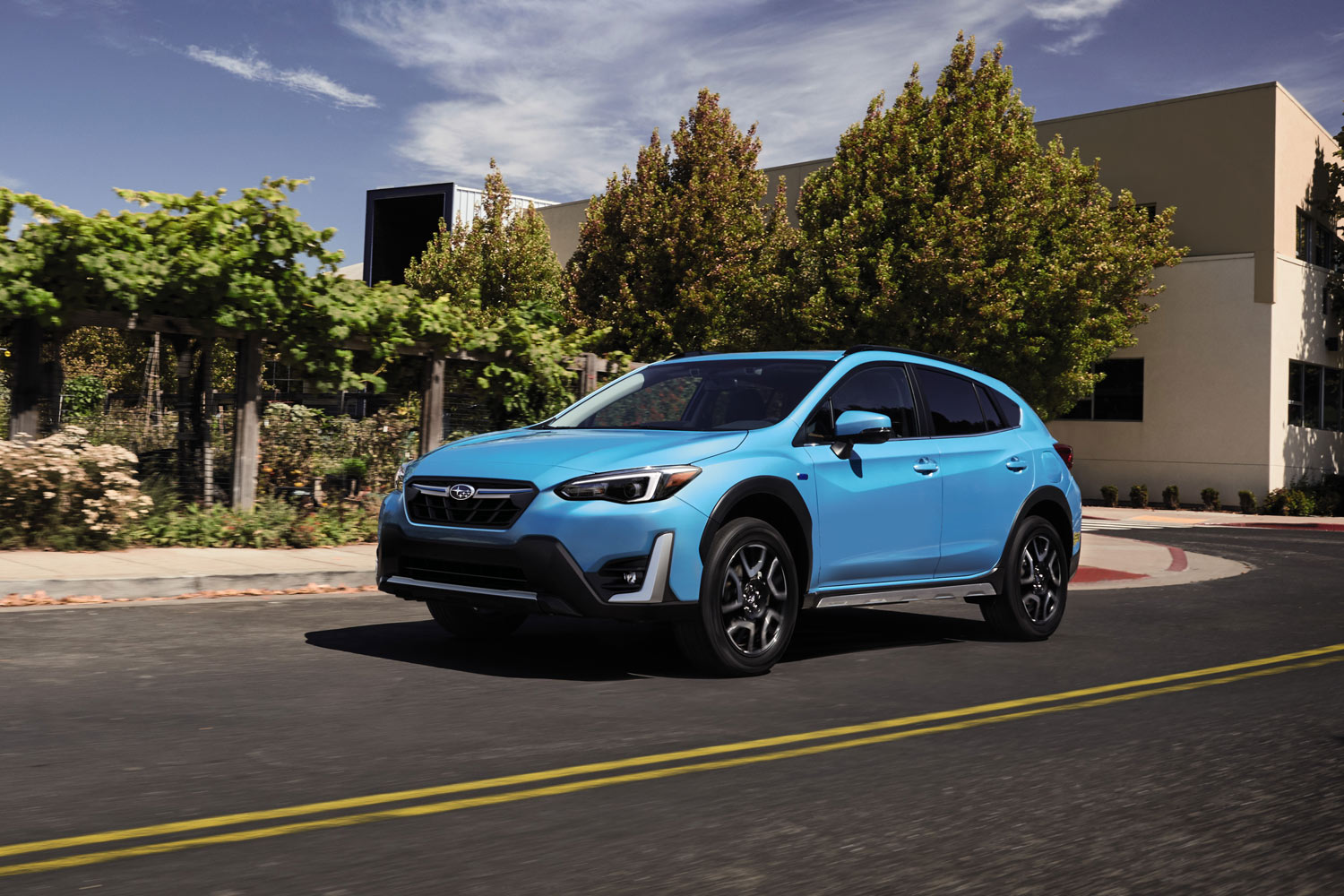 Subaru | Crosstrek
Subaru | Crosstrek
Leather-trimmed seats are standard in Limited and Hybrid, while Subaru's EyeSight driver-assist technology is included with every automatic-transmission Crosstrek.
Base and Premium include a 2.0-liter four-cylinder engine making 152 horsepower and 145 lb-ft of torque, with a six-speed manual or optional continuously variable automatic transmission. The Sport and Limited trims move to a larger 2.5-liter four-cylinder making 182 horsepower and 176 lb-ft of torque — the same powerplant that comes standard in the Forester — with an automatic transmission as the only option.
The 2022 Forester's trims include Base, Premium, Sport, Limited, Wilderness, and Touring. It starts at about $26,000 and tops out around $36,000 for the Touring, with a single options package on most trims. The Sport trim, for example, has a $1,600 package that adds an upgraded stereo, larger touchscreen, power rear liftgate, and reverse automatic braking to avoid backup collisions. A power moonroof is standard in all trims except Base. Leather-trimmed seats are included in Limited and Touring.
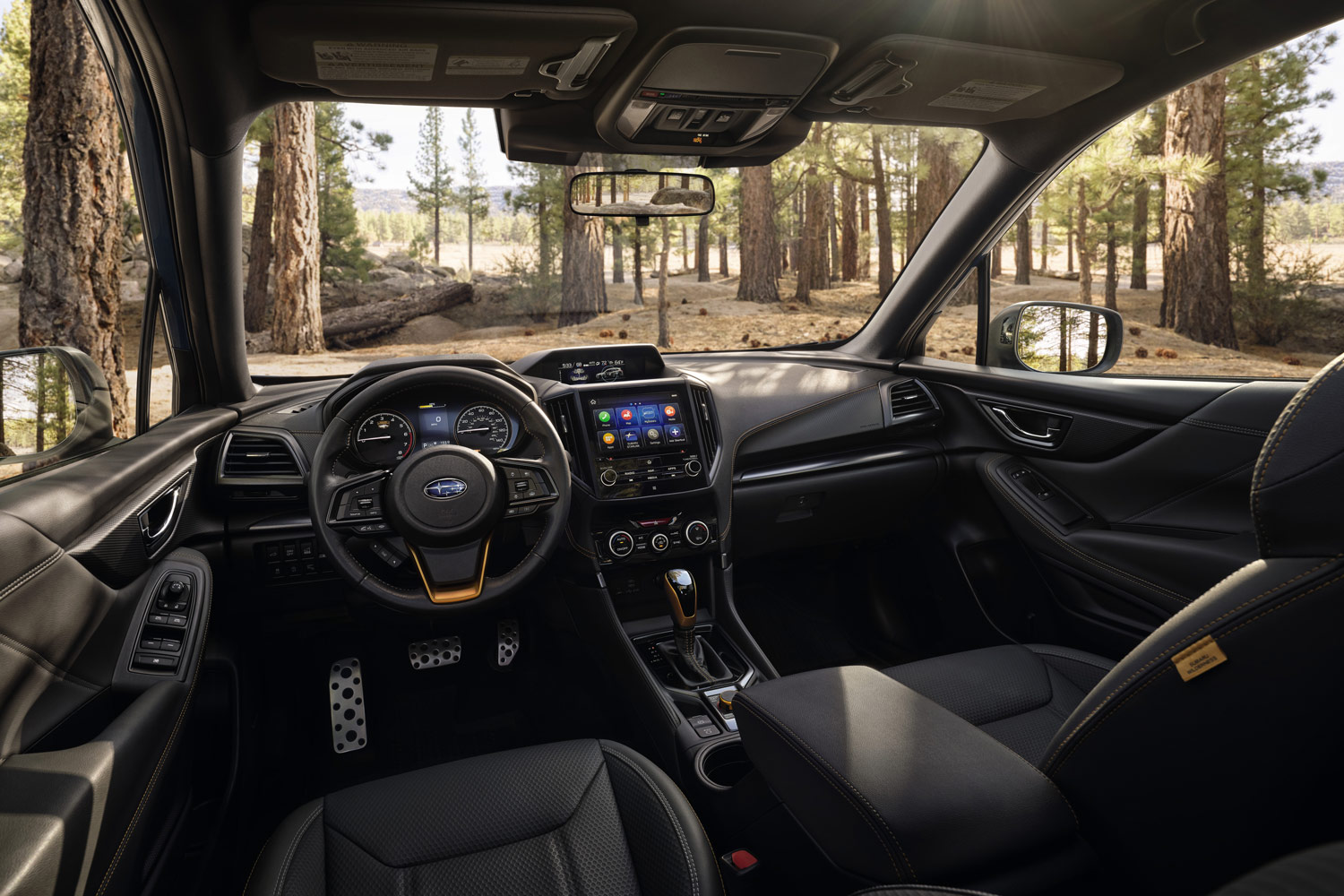 Subaru | Forester
Subaru | Forester
Crosstrek Dimensions Are a Little Smaller
The Forester has significantly more cargo capacity than the Crosstrek (74.2 cu-ft versus 55.3), thanks in part to about 6 inches of added length (182.7 inches versus 176.5), though they have a nearly identical wheelbase at around 105 inches. Both have 8.7 inches of ground clearance, but the Forester is nearly 5 inches taller. The Wilderness trim adds a half inch of ride height.
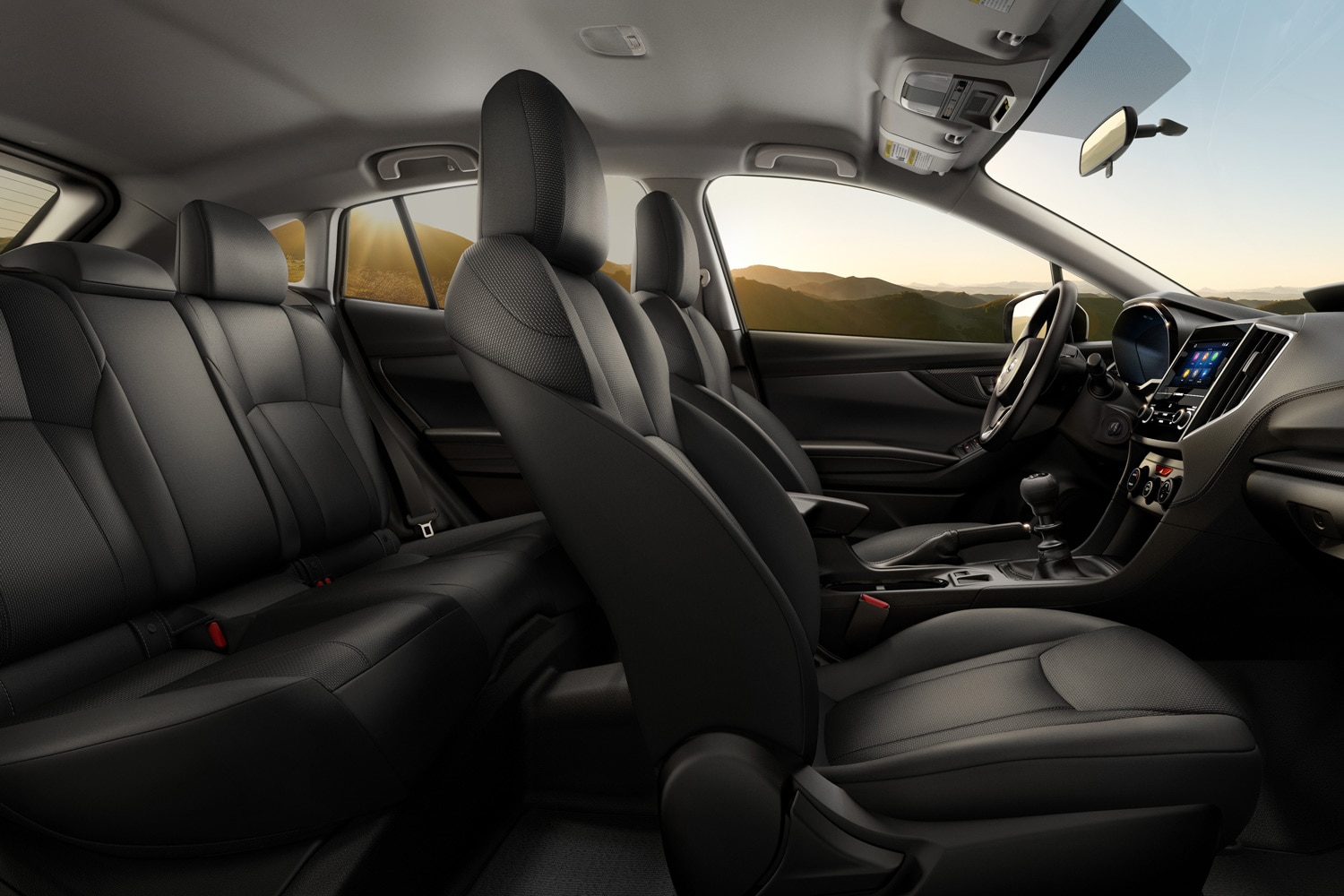 Subaru | Crosstrek
Subaru | Crosstrek
The Forester also offers a bit more head- and legroom, particularly for rear-seat passengers. If you frequently haul larger loads or have back-seat passengers, you may appreciate the Forester's bigger dimensions.
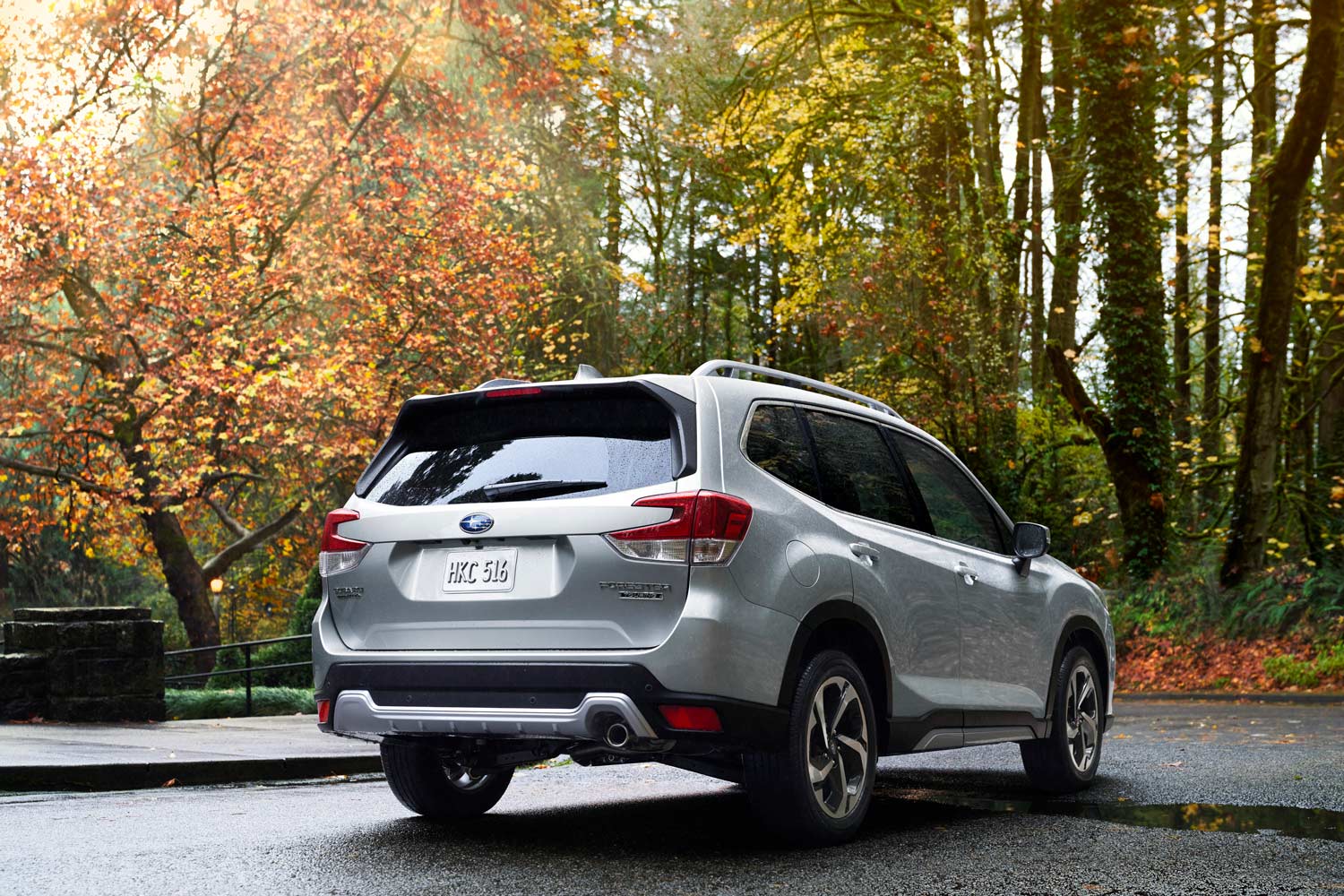 Subaru | Forester
Subaru | Forester
Forester Sips Fuel Faster Than the Crosstrek
If the size differences didn't seal the deal for you, perhaps the fuel economy differences will. According to EPA estimates, the Crosstrek gets slightly better mileage. The exception is the manual version, which is only available with the smaller engine and which gets 25 mpg in combined city and highway driving. The automatics with the 2-liter and 2.5-liter engines get 30 mph and 29 mph, respectively. The Forester's city and highway numbers are slightly lower, but the combined estimate is also 29 mph, dropping to 26 mph with the Wilderness package.
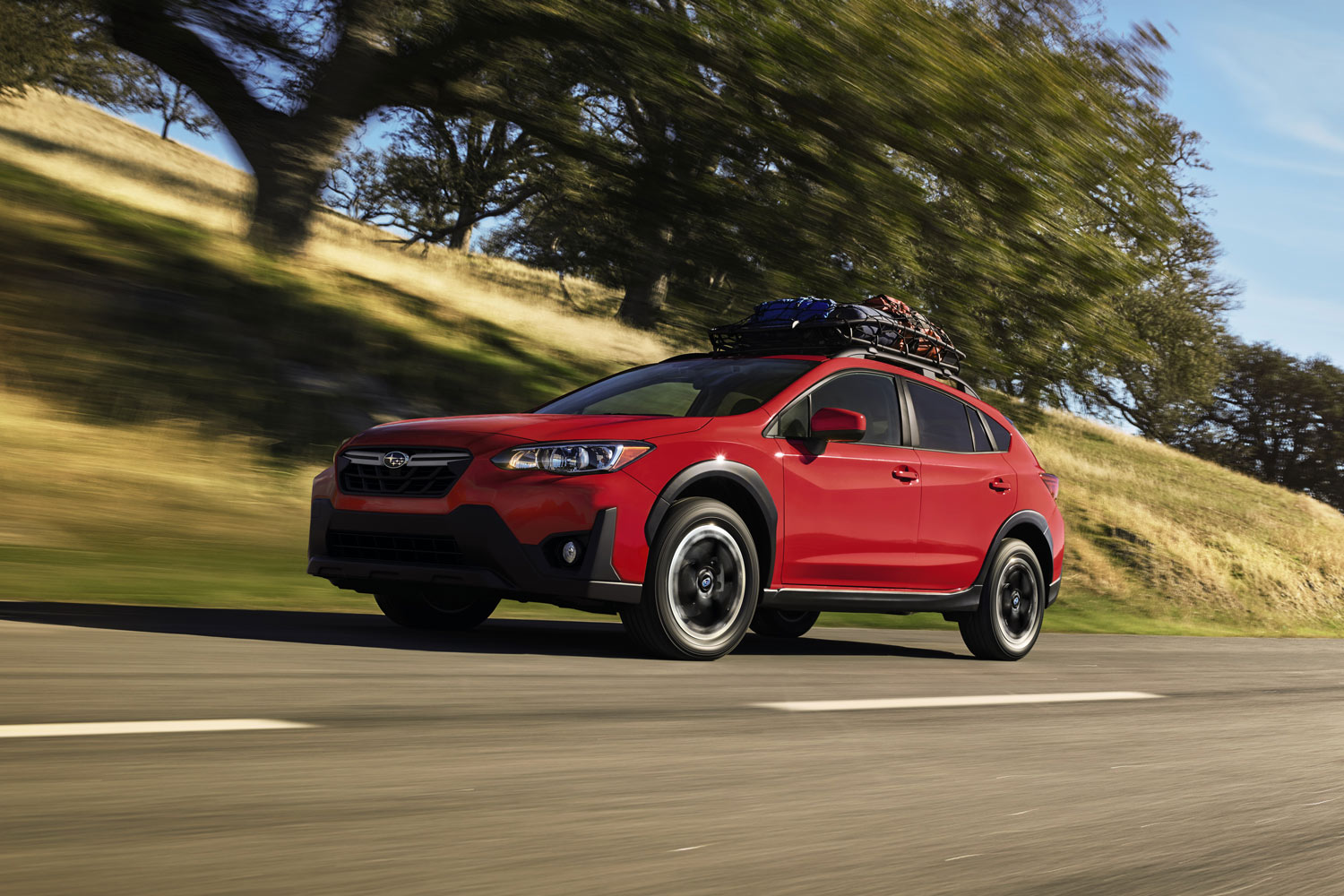 Subaru | Crosstrek
Subaru | Crosstrek
The Crosstrek Hybrid has a 90 MPGe rating and has an all-electric range of 17 miles and a 35 mpg combined rating on gas alone. The Forester has no plug-in or hybrid option.
All vehicle pricing includes MSRP plus destination charges (set at the time of publication) and will be rounded to the nearest thousand.



